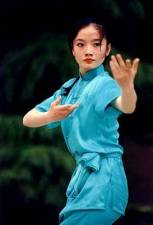
Baguazhang (translated as "The palm of the eight trigrams) is one of the most important internal martial arts from China. It was created in the early 19th century by Dong Haichuan and is based on the ancient Chinese concept of eight trigrams and an ancient form of Tibetan circular walking meditation.
The movements of Baguazhang are characterized by circular steps and the fighting is done by using palm strikes and kicks (never punches). The style was especially designed for fighting with several opponents at once and was most suitable for bodyguards.
After 1870 Baguazhang became so famous because of its fighting efficiency that all the personal bodyguards of the Chinese emperor had to be Baguazhang masters.
In our times, most people practise this art mainly for health benefits, although lately its fighting side has been emerging again.
Sun Zhijun is one of the most famous Baguazhang (Cheng style) masters of our times. Although he is over 70 in the clip, the video shows the movements of a young man with amazing physical and technical skills, beyond the abilities of most of the young people. Apparently, old age is more a state of mind than a real biological process!
Another impressive demonstration, by Lu Zijian (age 93 in the clip, now he is 115 and still alive) can be seen here.
Wednesday, May 28, 2008
Closer to eternal youth and immortality - Baguazhang
Subscribe to:
Post Comments (Atom)





2 comments:
that was a really long time of martial arts. I think is not only the Chinese legacy, it is the world's legacy.
Of course it's the world's legacy. In antiquity there was Kalaripayiat in India and Pankrateyon in Greece. From India, the martial arts came to China through Bodhidharma and others, then they moved to Korea, Japan, Vietnam and so on.
Kali in Philippines and Penchak Silat in Malaysia and Indonezia seem to have histories ot their own. So, even though a martial art belongs to a specific culture, its deep roots come from all over the world.
Post a Comment